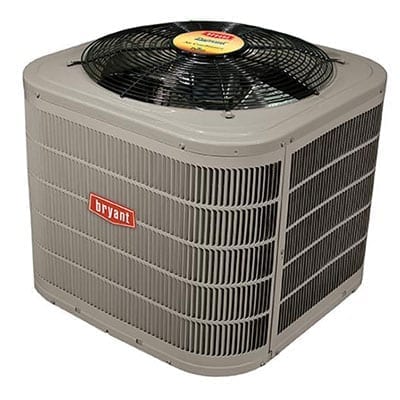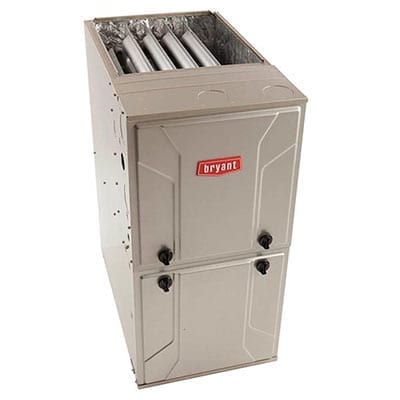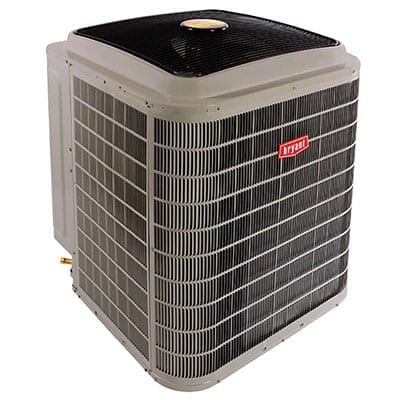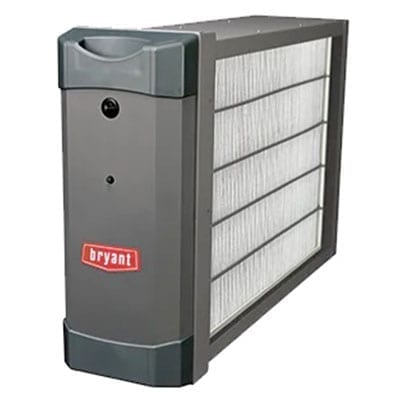Commercial HVAC for Art Galleries
Commercial HVAC systems play a crucial role in preserving the integrity of art displayed in museums by providing efficient cooling and temperature control. These systems create and maintain ideal temperature, humidity, and air quality levels essential for safeguarding delicate artworks, masterpieces, from deterioration in museums. The significance of efficient cooling and temperature control in an art gallery facility cannot be overstated. A meticulously designed air conditioning system tailored to the unique requirements of art gallery environments is crucial. By ensuring stable environmental conditions, such as controlled temperatures and humidity levels, air conditioning systems contribute significantly to the longevity and preservation of valuable pieces showcased within museums and galleries. These specialized HVAC systems are essential for the conservation of art and artifacts. This blog post delves into the critical role that commercial HVAC solutions play in protecting artistic treasures in museums while highlighting key considerations for implementing an effective temperature control system specifically tailored for sensitive exhibitions in art gallery settings.
Understanding the Impact of Heat and Humidity on Artwork
Effects of Heat and Humidity
Improper humidity control can spell disaster for art galleries. Fluctuations in temperature and humidity levels can cause irreparable harm to delicate artwork in museums. These fluctuations can affect the objects on display and stored in museum facilities. It is crucial for museums to maintain a stable temperature and humidity envelope to preserve the integrity of their collections. High temperature and humidity can negatively impact the condition of art pieces, causing warping, fading, and deterioration. To prevent this, it is important to maintain proper temperature control and RH levels within the facility.
Art objects made from organic materials such as wood, paper, or canvas are particularly vulnerable to damage caused by high temperature control and humidity. These objects include merchandise crafted from rh. For instance, excessive moisture in the air can lead to mold growth on objects, which can be a problem in retail spaces and other facilities. RH levels should be monitored to prevent mold growth. Moreover, in retail spaces and facility environments, drastic changes in temperature can cause wooden frames and objects to expand or contract, potentially leading to structural damage. This is especially important to consider for RH-sensitive objects.
Detrimental Effects on Art Materials
Different types of art objects are affected differently by heat and moisture in retail spaces and facility. RH control is important for preserving the quality of these materials. For example:
-
Oil paintings, like other objects, are susceptible to cracking when exposed to extreme fluctuations in temperature. This is especially important to consider when displaying artwork in retail spaces or any facility that experiences significant changes in temperature.
-
Paper-based artworks like watercolors or prints are prone to wrinkling or buckling when exposed to high humidity levels in a facility.
-
Sculptures made from metal may corrode if not kept within proper temperature ranges.
The impact of heat and humidity on artwork underscores the critical importance of effective HVAC systems in maintaining a stable environment within art galleries.
The Crucial Role of Climate Control in Art Preservation
Importance of Temperature Control
Maintaining stable temperature and humidity levels is crucial for preserving the quality and condition of artwork in galleries. Fluctuations in temperature can lead to irreversible damage, causing colors to fade, materials to expand or contract, and adhesives to weaken. For instance, excessive heat can accelerate chemical reactions within artworks, leading to degradation.
Art preservation also heavily relies on ideal climate conditions. High temperatures can result in accelerated chemical deterioration, while low temperatures can cause materials such as paint and wood to become brittle or develop mold. Controlling temperature effectively prevents these issues from occurring.
Preventing Environmental Risks
Climate control systems play a key role in protecting art pieces against environmental risks like mold growth and insect infestation. Maintaining an optimal level of humidity discourages mold spores from germinating and spreading on vulnerable surfaces such as canvas or paper. Controlling the environment helps deter pests that thrive in specific conditions; for example, termites are attracted to areas with high humidity levels.
Designing HVAC Systems for Art Galleries and Museums
Importance of HVAC Design
The design plays a critical role in maintaining optimal conditions for preserving artworks. The HVAC system must be strategically designed to ensure proper air distribution throughout the gallery space. This is essential for regulating temperature and humidity levels, which are crucial factors in art preservation.
A well-designed HVAC system should incorporate features that facilitate efficient air distribution, such as carefully positioned vents and ductwork. By ensuring uniform airflow, the system can effectively regulate the climate within the gallery, preventing localized fluctuations that could potentially damage delicate artworks.
Proper air distribution also contributes to maintaining consistent environmental conditions across all areas of the gallery, regardless of their proximity to external walls or windows. This uniformity is vital for protecting art pieces from potential deterioration caused by uneven climate exposure.
Filtration and Ventilation Considerations
In addition to air distribution, effective filtration and ventilation are integral aspects of HVAC system design for art galleries. High-quality filters are essential for removing contaminants and particulate matter from the circulating air, safeguarding artworks against potential damage from airborne pollutants.
Furthermore, adequate ventilation plays a crucial role in managing indoor air quality within art galleries. By introducing fresh outdoor air into the space while expelling stale indoor air, proper ventilation helps maintain a clean and healthy environment conducive to preserving valuable artworks.
Balancing Ambience and Visitor Comfort in Art Spaces
Achieving Balance
Maintaining a comfortable environment for visitors while preserving the integrity of delicate artwork is crucial in commercial HVAC for art galleries. Achieving this balance involves ensuring that temperature and humidity levels are optimal to safeguard the artworks while also providing a comfortable experience for visitors. For instance, maintaining relative humidity between 40-60% can help prevent damage to paintings, sculptures, and other artifacts without compromising visitor comfort.
Finding the perfect equilibrium between creating an enjoyable experience for visitors and protecting valuable pieces of art requires careful consideration of various factors. The impact of lighting, space layout, and materials used in exhibition spaces must be taken into account when designing HVAC systems for art galleries. By implementing strategies such as zoning controls or utilizing advanced sensors, it becomes possible to tailor climate control solutions based on specific areas within the gallery.
Innovative HVAC Solutions
Exploring innovative HVAC solutions offers a promising avenue to address the unique challenges posed by art spaces. For example, advanced air purification systems not only ensure optimal air quality but also contribute to maintaining a pristine environment ideal for showcasing artwork. Integrating smart climate control technologies allows for precise regulation of temperature and humidity levels while minimizing energy consumption.
Incorporating aesthetically pleasing HVAC elements into gallery spaces can further enhance both visitor comfort and visual appeal. Concealing ductwork behind architectural features or utilizing decorative grilles can seamlessly blend climate control components with the overall design aesthetic without detracting from the ambiance of the space. This approach enables galleries to uphold their artistic vision while prioritizing visitor comfort and artifact preservation.
Ventilation Strategies for Reducing Pollutants in Galleries
Importance of Effective Ventilation Systems
Art galleries require adequate ventilation to maintain clean air quality and preserve the delicate artworks. Effective ventilation systems play a crucial role in reducing pollutants and contaminants that can deteriorate the condition of art pieces. Proper air circulation helps in controlling temperature, humidity, and airborne particles, creating a stable environment for the displayed artwork.
Adequate ventilation not only ensures the comfort of visitors but also contributes to preserving the integrity of art collections. Without proper airflow and filtration, pollutants such as dust, volatile organic compounds (VOCs), and other airborne particles can accumulate within gallery spaces, posing a threat to the artwork’s longevity. By implementing robust ventilation strategies, galleries can mitigate these risks while enhancing visitor experience.
Role of Air Filtration and Purification Technologies
Incorporating advanced air filtration and purification technologies is essential for maintaining pristine air quality within art galleries. High-efficiency particulate air (HEPA) filters are instrumental in capturing microscopic particles suspended in the air that could potentially harm delicate artworks. Activated carbon filters aid in neutralizing VOCs emitted from various materials commonly found in gallery settings.
Furthermore, UV germicidal irradiation systems can be employed to eliminate bacteria, viruses, mold spores, and other microorganisms present in the air circulation system. These technologies not only contribute to sustaining a healthy indoor environment but also safeguard valuable art pieces from potential damage caused by microbial growth or contamination.
Ventilation Strategies for Minimizing External Pollutants
Implementing strategic measures to minimize the impact of external pollutants on delicate art pieces is imperative for gallery curators. One effective approach involves creating positive pressure within gallery spaces by introducing filtered outdoor air into exhibition areas while simultaneously expelling indoor air laden with contaminants outdoors.
Moreover, utilizing vestibules or buffer zones at entry points serves as an additional barrier against external pollutants infiltrating gallery interiors. This transitional space allows visitors to acclimate while preventing direct exposure of incoming outdoor air containing pollutants directly into exhibition areas where vulnerable artworks are displayed.
Smart HVAC Solutions for Energy Efficiency in Art Exhibits
Optimizing Energy Efficiency
Art galleries require sensitive exhibitions to maintain ideal conditions for preserving valuable artworks. Smart HVAC solutions play a crucial role in optimizing energy efficiency while ensuring the preservation of art exhibits. These solutions utilize advanced sensors, automation, and energy management systems to regulate temperature, humidity, and air quality within the gallery space.
Smart HVAC technologies can detect fluctuations in environmental conditions and make real-time adjustments to ensure that the artworks are protected from potential damage caused by hydrogen sulfide or other pollutants. By continuously monitoring and adjusting these parameters, smart HVAC systems create an environment that is both conducive to art preservation and energy-efficient.
Implementing these innovative solutions allows gallery owners to significantly reduce their operational costs while minimizing their environmental impact. By efficiently managing heating, ventilation, and air conditioning through smart technologies, galleries can achieve substantial savings on energy consumption without compromising the integrity of their exhibited works.
Benefits of Advanced Sensors
One key advantage of using advanced sensors in commercial HVAC for art galleries is the ability to accurately measure temperature and humidity levels throughout the exhibition space. This ensures that delicate artworks remain protected from environmental fluctuations that could potentially cause deterioration or damage.
Moreover, advanced sensors enable precise control over airflow patterns within the gallery, preventing stagnant air pockets that could lead to mold growth or uneven distribution of temperature and humidity. As a result, these sensors contribute significantly to maintaining optimal exhibition conditions while promoting overall energy efficiency.
In addition to this heightened level of control over environmental factors, automation plays a pivotal role in regulating various aspects of HVAC operations within art spaces. Automation not only streamlines processes but also reduces human error.
By embracing smart HVAC solutions equipped with advanced sensors and automation capabilities designed specifically for art galleries’ unique needs—gallery owners can effectively safeguard their valuable collections while simultaneously reducing energy consumption and associated costs.
Custom HVAC Designs for Art Preservation and Visitor Experience
Importance of Custom HVAC Designs
Art galleries have unique requirements. Customized HVAC designs play a crucial role in achieving this delicate balance. These designs are tailored to create specific airflow patterns and temperature zones that not only protect the art pieces from environmental damage but also enhance the overall viewing experience.
Custom HVAC systems help maintain stable humidity levels, control temperature fluctuations, and minimize exposure to damaging elements such as UV rays. By carefully regulating these factors, galleries can ensure the preservation of valuable artworks while providing a comfortable environment for patrons. For instance, by strategically placing air vents and utilizing advanced filtration systems, galleries can prevent dust particles from settling on delicate paintings or sculptures.
Implementing custom HVAC designs also involves considering the gallery’s building envelope, which includes aspects like insulation, windows, doors, and roofing. A well-designed building envelope contributes significantly to energy efficiency and helps maintain a stable indoor climate essential for both art preservation and visitor comfort.
Enhanced Customer Experience
The implementation of custom HVAC solutions in art galleries goes beyond preserving artwork; it directly impacts visitor experience. By creating distinct temperature zones within different exhibition spaces or employing advanced air purification systems, galleries can ensure that patrons enjoy a comfortable atmosphere while exploring the exhibits.
For example, imagine walking into an art gallery where each section has its own carefully controlled climate – one room maintains cool temperatures ideal for showcasing ancient tapestries without risking deterioration due to heat exposure; another area features precise humidity control necessary for displaying delicate watercolor paintings without causing warping or discoloration.
These customized HVAC designs contribute to noise reduction within gallery spaces through efficient ventilation systems that operate quietly in the background. This creates a serene ambiance conducive to contemplation and appreciation of artistic works without disturbances from loud machinery or external sounds.
Advanced Cooling Technologies in Art Gallery Preservation
Precision Cooling Systems
Precision cooling systems, such as chilled beams and radiant cooling, play a vital role in maintaining the optimal temperature conditions required for preserving art in galleries. These advanced technologies offer precise control over temperature and humidity levels, safeguarding artworks from deterioration caused by fluctuating environmental conditions. For instance, chilled beams use convection to cool spaces quietly and efficiently without creating air currents that could disturb delicate artworks.
The use of precision cooling systems also helps prevent mold growth, which can be detrimental to art pieces. By maintaining consistent humidity levels, these technologies mitigate the risk of mold formation on paintings, sculptures, or other artifacts displayed in art galleries. This is crucial for ensuring the longevity of valuable works of art for future generations to appreciate.
Precision cooling systems contribute to enhanced energy efficiency within art gallery spaces. By delivering targeted cooling where it’s needed most, these technologies reduce overall energy consumption compared to traditional HVAC systems. This not only benefits the environment by lowering carbon emissions but also leads to cost savings for gallery owners or operators.
Improved Climate Control
The integration of innovative heating, ventilation, and air conditioning (HVAC) technologies offers improved climate control within art galleries. These advanced systems are designed with specialized filtration agents that help purify the air circulating through gallery spaces. By effectively removing airborne contaminants and pollutants, they ensure a cleaner environment that protects artworks from potential damage caused by exposure to harmful substances.
Moreover, modern HVAC technology enables precise monitoring and regulation of indoor air quality parameters essential for preserving delicate art pieces. With features like programmable controls and real-time data analysis capabilities, gallery managers can maintain optimal environmental conditions conducive to artwork preservation while simultaneously providing visitors with a comfortable viewing experience.
High Performance Air Quality Management in Art Spaces
Importance of Air Quality Management
Proper air quality management is crucial for art galleries to preserve the integrity of their art pieces and ensure the well-being of visitors and staff. The presence of fine particles, dust, and metal in the indoor air can have detrimental effects on delicate artworks. Without adequate air filtration, these contaminants can compromise the aesthetic appeal and structural stability of valuable masterpieces.
Maintaining pristine indoor air quality also plays a significant role in preserving the health and well-being of individuals within art spaces. Through effective air circulation systems and advanced purification methods such as HEPA filters and carbon filtration, galleries can mitigate potential health risks associated with poor indoor air quality. By addressing these factors, galleries create a safer environment for both visitors and those responsible for curating and maintaining the artwork.
Role of Purification Methods
HEPA filters are instrumental in capturing tiny particles that may otherwise settle on or within art pieces. These filters are designed to trap 99.97% of particles as small as 0.3 microns from the indoor air, ensuring that harmful contaminants do not compromise the aesthetics or structural integrity of delicate artworks. Carbon filtration is effective at removing odors, gases, volatile organic compounds (VOCs), and other airborne pollutants that could potentially damage art pieces over time.
Incorporating these advanced purification methods into an HVAC system contributes significantly to maintaining optimal levels of relative humidity (RH) within art spaces. Controlling RH levels is critical for preventing moisture-related issues such as mold growth or warping in wooden frames or canvases—factors that could irreversibly damage precious works of art.
Conclusion on Optimizing Art Gallery Environments with HVAC Systems
The preservation of art in gallery environments heavily relies on the implementation of advanced HVAC systems. By understanding the impact of heat, humidity, and pollutants on artwork, designing custom HVAC solutions becomes imperative. Balancing ambience and visitor comfort while ensuring high-performance air quality management is a delicate yet crucial task for art spaces. Implementing smart HVAC strategies not only enhances energy efficiency but also contributes to the long-term preservation of valuable artworks.
Art galleries and museums can significantly benefit from adopting tailored HVAC systems designed to optimize both preservation and visitor experience. As technology continues to advance, it is essential for these institutions to stay updated with the latest cooling technologies and ventilation strategies. By prioritizing climate control and air quality, art spaces can continue to provide a conducive environment for art preservation while offering a comfortable and enriching experience for visitors.
Frequently Asked Questions
What are the key considerations for designing HVAC systems for art galleries and museums?
The design of HVAC systems for art galleries and museums must prioritize precise climate control to maintain stable temperature and humidity levels. It should minimize air pollutants, provide adequate ventilation, and ensure energy efficiency.
How does HVAC impact the preservation of artwork in art galleries?
HVAC systems play a crucial role in preserving artwork by maintaining optimal environmental conditions such as temperature, humidity, and air quality. Consistent climate control helps prevent deterioration or damage to delicate artworks over time.
What are some advanced cooling technologies used in art gallery preservation?
Advanced cooling technologies like microclimate control systems, desiccant dehumidification, and radiant cooling panels are employed to maintain precise temperature and humidity levels without causing air movement that could disturb delicate artworks.
How can HVAC solutions contribute to energy efficiency in art exhibits?
HVAC solutions can enhance energy efficiency by incorporating features such as variable speed drives on fans and pumps, demand-controlled ventilation based on occupancy levels, efficient filtration systems, and utilizing smart building automation technology.
Why is high-performance air quality management important in art spaces?
High-performance air quality management is essential in art spaces to reduce airborne pollutants that can potentially harm sensitive artworks. This includes implementing effective filtration systems to remove particulates while maintaining proper ventilation for fresh air circulation.
Related Information
Commercial HVAC for Bagel Shops
Commercial HVAC for Baby Stores
Commercial HVAC for Auto Repair Shops
Commercial HVAC for Art Supply Stores
Commercial HVAC for Aquarium Shops
Commercial HVAC for Appliance Repair Shops: A Comprehensive Guide
Commercial HVAC for Antique Shops: A Complete Guide
Commercial HVAC for Advertising Agencies: Essential Marketing Strategies
Commercial HVAC for Acupuncture Clinics: Essential Guide
The Primary Services Provided By Our Local HVAC Company
Areas We Service
Click on the area below to see what your neighbors are saying about their recent experiences with our company.
Our Locations
14913 SE Kellogg Ave
Milwaukie, OR 97267, USA
4409 SE 24th Ave, Suite 35
Portland, OR 97202, USA




